Salvador Dalí claimed that Malcolm Morley, the inaugural winner of the Turner prize, was the best painter of his generation, no small accolade given that the artist counted Roy Lichtenstein and Andy Warhol as contemporaries.
Morley, who has died aged 86, pioneered two distinct movements in painting. In the 1960s he spearheaded photorealism. Morley’s subjects ranged from picnic to pastoral scenes, but his images of ocean liners, caught in superb detail, are the best known. For his part, the artist preferred the term “superrealist”, and it is true that these paintings are more than mere copies of photographs: the texture and shadows within the work have an uncanny quality, one that perhaps explains the admiration of the surrealist Dalí.
By the 1970s, however, Morley had tired of the style. “As soon as a movement is named you know it’s over,” he said. His painting became messier, the brush strokes more obvious, though transport remained an obsession. With Train Wreck (1975), which depicts a derailment surrounded by painted newspaper reports and phrases in Japanese, Chinese and Russian, Morley came to be seen as an early proponent of neo-expressionism, the dominant style of painting in the 1980s, and for which he was included in the influential 1981 group show A New Spirit in Painting, at the Royal Academy in London. The artist appreciated the second tribute even less than the first. “If I had known that I was going to invent horrors like Julian Schnabel and David Salle … I would have cut off my hands,” he once said.
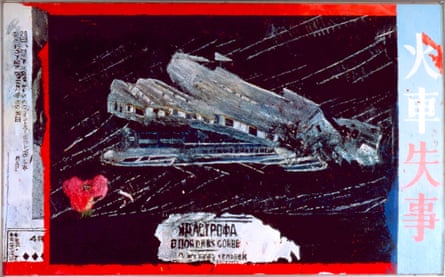
In 1984 the artist’s first survey show came to the Whitechapel Gallery in London. It was for this that Morley was nominated for the Turner prize, alongside Gilbert and George, Richard Long, Howard Hodgkin and Richard Deacon. When he received the call telling him he had won, the artist recalled that he was at home on the Bowery, in downtown Manhattan, New York, gazing out of the window at a homeless person defecating in the street. “It felt unreal. Here I was watching this act; the next minute I’m told I’ve won.”
Not everyone was impressed however: Waldemar Januszczak, writing in the Guardian, said that while Morley’s Whitechapel show was “fine” the artist could hardly be thought of as British. In fact, Morley took American citizenship in 1991.
Malcolm was born in north London to Dorothy Morley, who never revealed the name of his father. When her son was six, Dorothy married a former Welsh miner, an imposing figure known only as Evans who terrified the boy. That year, his mother sent him to a boarding school in Devon, only telling him that he was going, to his horror, when they arrived at the train station. Nonetheless, when home for the holidays, Malcolm seemed to enjoy his wartime childhood, being fascinated by the blitz. “We would go on top of roofs and watch Messerschmitts and Spitfires have dogfights, and bet marbles on who was going to shoot who down.”

Malcolm took to model-making, recreating the planes he saw in the skies over London, as well as other military kit. In 1944 he spent weeks making a balsawood miniature of the battleship HMS Nelson. The night he finished it, a doodlebug rocket hit the family home, destroying the front of the house. None of the family was hurt (apart from the dog, Sally) but the model was gone. Morley referenced the memory repeatedly. The 2013 painting B25 Liberator Over Independence, for example, depicts two planes swooping ominously over a warship.
An unruly pupil, Morley was often in trouble at school. After receiving the cane, he absconded aged 14, and persuaded the crew of the Salvonia, a tugboat bound for Newfoundland, to take him as ship’s boy. On his return, he took to petty crime in London and ended up at Hewell Grange borstal in Birmingham. There he learned weaving and bricklaying but neither helped him to get on the straight and narrow. Instead he burgled houses and, having turned 18, was sent to jail, first in Portsmouth for six months, and then in Wormwood Scrubs, London, for three years.
While incarcerated, Morley came across a copy of Lust for Life, Irving Stone’s 1934 novel featuring the painter Vincent van Gogh. Feeling empathy with Van Gogh’s fraught life, Morley became convinced he too could be an artist. He enrolled in a correspondence course from his cell and, on release in 1951, first painted watercolours of pubs and attempted to sell them to their landlords. Later he went to St Ives and waited at tables because “that’s where I heard the artists were”. A canny parole officer recognised Morley’s talent and got him into Camberwell College of Arts. After a year, in 1953, he transferred to the Royal College of Art – his fees sponsored by Julian Salmon, one of the owners of Lyons tea houses – studying alongside Peter Blake and Frank Auerbach.
Following graduation, in 1958, Morley met a young American woman on a bus and followed her to New York. Their short-lived marriage was the first of five for Morley. In Manhattan, he took another job as a waiter. One night a distinguished-looking customer sporting a monocle noticed his accent and asked him what had brought him to the US. On hearing he painted, the man stood up, hugged him, and introduced himself as Barnett Newman. “I almost dropped the fucking tray,” Morley recalled.

Through Newman, he fell into the downtown scene, meeting Warhol, Jackson Pollock and Willem de Kooning at the Cedar Street Tavern in Greenwich Village. He became a firm friend of Lichtenstein. His first solo exhibition, in 1964, was at the Kornblee gallery, where he showed a series of abstract works.
By his second exhibition at the gallery, in 1967, he was using photorealism, having become fascinated by the ocean liners at Pier 57 in New York. He had been included in the Guggenheim’s pivotal survey The Photographic Image a year earlier and by 1972 he was established enough to take part in Documenta 5 in Kassel, Germany. Yet recognition failed to quell Morley’s rebellious spirit. He was consuming copious amounts of LSD and cocaine and would turn up to a teaching position at Stony Brook University dressed in an assortment of threadbare women’s clothes. In 1974, the artist named by the critic Robert Hughes as “the last wild man of modern art” attacked his own painting with a water pistol when it came to auction (the water pistol was later attached to the canvas, a depiction of Buckingham Palace).
Morley showed internationally for the rest of his career, including major retrospectives at the Pompidou Centre in Paris (1993), the Hayward Gallery in London (2001) and the Ashmolean in Oxford (2013). New works were also included in a retrospective in Germany last month. “I don’t believe that artists should run for the office of artist,” he said of his trajectory. “They should be elected.”
Morley is survived by his fifth wife, Lida (nee Kruisheer), whom he married in 1989.
Malcolm Morley, artist, born 7 June 1931; died 1 June 2018
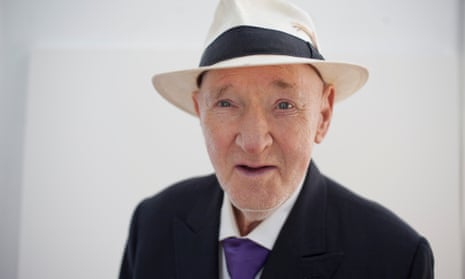
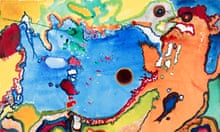
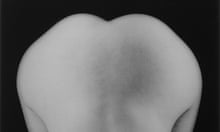
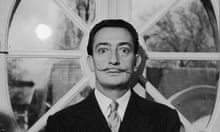





Comments (…)
Sign in or create your Guardian account to join the discussion